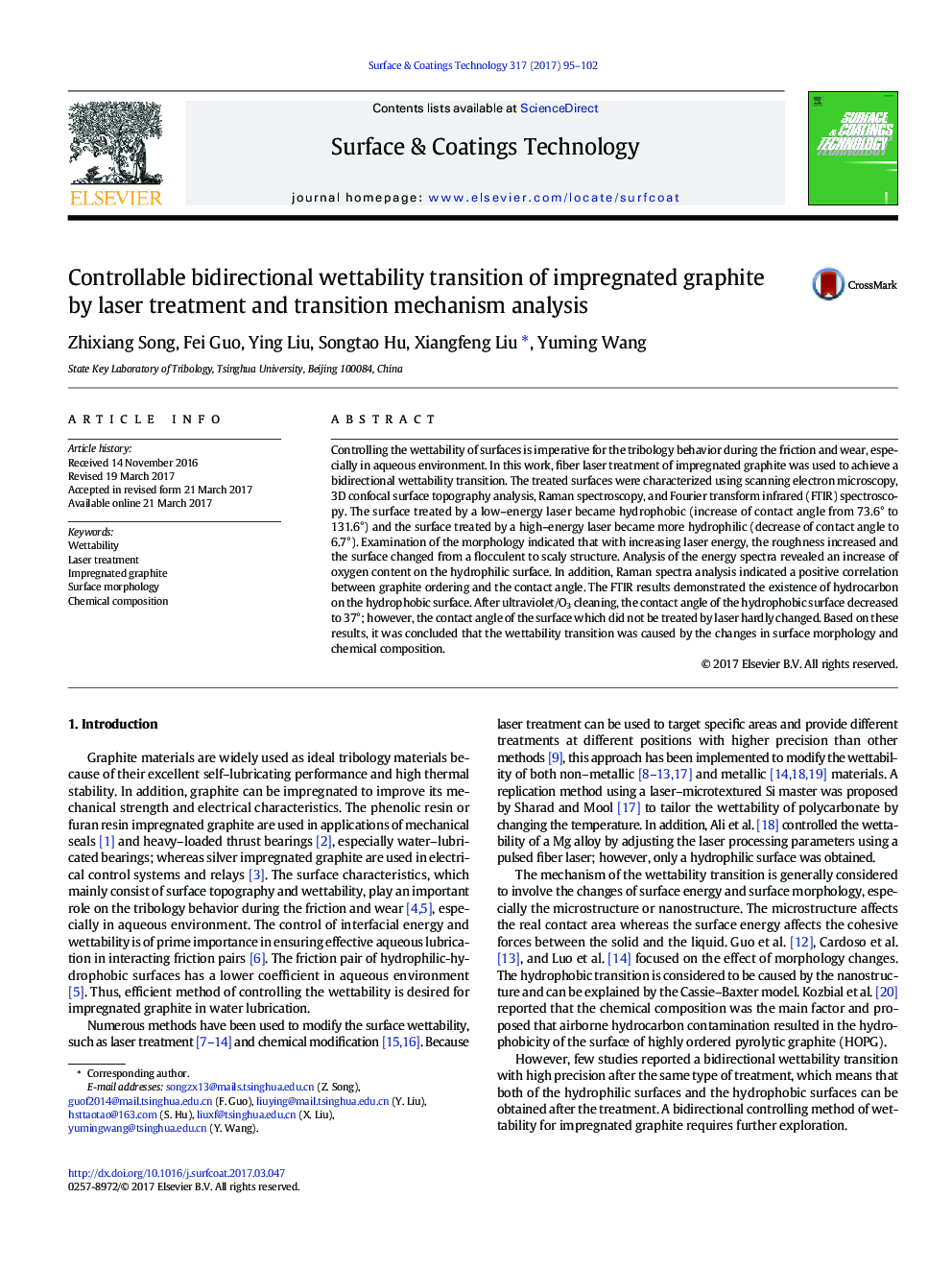| کد مقاله | کد نشریه | سال انتشار | مقاله انگلیسی | نسخه تمام متن |
|---|---|---|---|---|
| 5465492 | 1517565 | 2017 | 8 صفحه PDF | دانلود رایگان |
- A bidirectional wettability transition of impregnated graphite using laser treatment is reported.
- Graphite became ordered and hydrophilic as laser energy increased.
- Flocculent nanostructure and adsorbed hydrocarbon caused hydrophobic transition.
- The increasing real contact area and oxygen content led to hydrophilic transition.
Controlling the wettability of surfaces is imperative for the tribology behavior during the friction and wear, especially in aqueous environment. In this work, fiber laser treatment of impregnated graphite was used to achieve a bidirectional wettability transition. The treated surfaces were characterized using scanning electron microscopy, 3D confocal surface topography analysis, Raman spectroscopy, and Fourier transform infrared (FTIR) spectroscopy. The surface treated by a low-energy laser became hydrophobic (increase of contact angle from 73.6° to 131.6°) and the surface treated by a high-energy laser became more hydrophilic (decrease of contact angle to 6.7°). Examination of the morphology indicated that with increasing laser energy, the roughness increased and the surface changed from a flocculent to scaly structure. Analysis of the energy spectra revealed an increase of oxygen content on the hydrophilic surface. In addition, Raman spectra analysis indicated a positive correlation between graphite ordering and the contact angle. The FTIR results demonstrated the existence of hydrocarbon on the hydrophobic surface. After ultraviolet/O3 cleaning, the contact angle of the hydrophobic surface decreased to 37°; however, the contact angle of the surface which did not be treated by laser hardly changed. Based on these results, it was concluded that the wettability transition was caused by the changes in surface morphology and chemical composition.
439
Journal: Surface and Coatings Technology - Volume 317, 15 May 2017, Pages 95-102
